Space Race: Georgia Tech’s Aspiring Astronauts
A community of dreamers share their stories about reaching for the stars.
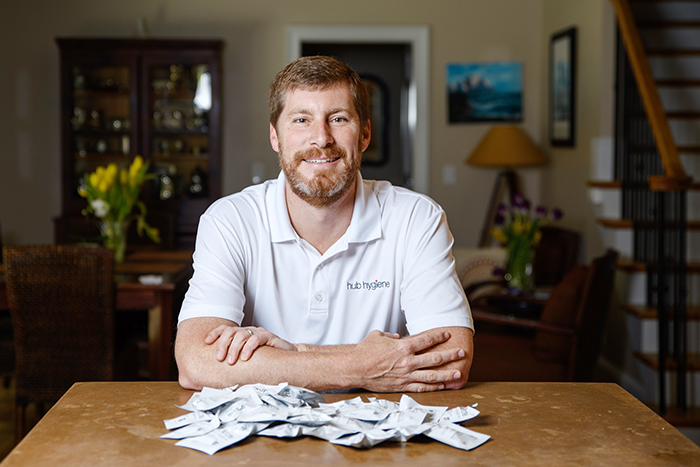
Jud Ready, associate director of External Engagement and principal research engineer, Georgia Tech Research Institute.
Jud Ready always wanted to be an astronaut.
“From first grade forward, that’s what I planned to do,” said Ready, principal research engineer at the Georgia Tech Research Institute and adjunct professor in the School of Materials Science and Engineering. “While studying engineering in college, I realized I didn’t want to build the spaceship. I wanted to work inside the spaceship.”
Glenn Lightsey, interim director of Georgia Tech’s Space Research Initiative, had similar aspirations. Both men tried to follow their dreams to the stars. But life presented them with alternative plans.
“In my 20s, I wanted to be an astronaut,” said Lightsey who, like Ready, eventually settled on building spaceships. “After I got married and had a family, I started thinking about other things. I became a professor instead. Not a bad life.”
Ever since the 1959 selection of the Mercury Seven astronauts (which included John Glenn and Alan Shepherd), NASA periodically puts out the word: We need astronauts. And thousands of dreamers answer the call. Ready applied seven times, becoming part of a group that calls itself “ASHOs” (purposely pronounced much like a common derogatory expletive).
“It stands for ‘Astronaut Hopefuls,’ and it’s a very large group,” said Ready.
Long Odds to Countdown
Ready came closest to making the cut in 2003, when there were 4,000 ASHOs. He was among the final 150 candidates. Comparatively, about 12,000 people applied in 2021, and 10 of them graduated from NASA’s astronaut training program earlier this spring.
These kinds of figures come in handy when students ask Ready for advice about applying (although NASA provides considerable information for ASHOs online).
“I always tell them to go into the process with your eyes wide open, because the odds are heavily against you,” he explained. “But also, to swing for the fences and pursue what makes you happy. Check all the right boxes, give it your best shot, and if it doesn’t happen, that doesn’t imply failure.”
Throughout the space program’s history, ASHOs have far outnumbered astronauts. Since 1959, NASA has selected 360 astronauts. Right now, fewer than 50 of them are active. But there wouldn’t be astronauts without ASHOs. And there’s something to be said for giving it the old college try.
“Whether or not one makes it to be an astronaut, if you aspire to be one, it will cause you to challenge yourself to become a better person. That is what I feel it did for me,” said Lightsey, a professor at the University of Texas when he taught Andreas Mogensen, a Danish engineer who became an astronaut with the European Space Agency.
So far, Georgia Tech has produced 14 astronauts, including lunar explorer John Young, former commander of the International Space Station Shane Kimbrough, and Sandra Magnus, a teaching assistant in Ready’s class when he was an undergrad, who became mission specialist aboard the space station and the final space shuttle flight.
In March, NASA opened the application process again for six weeks. More than 8,000 people applied for eight to 12 astronaut-candidate positions. At least three of them come from the Georgia Tech community.
“Whether or not one makes it to be an astronaut, if you aspire to be one, it will cause you to challenge yourself to become a better person. That is what I feel it did for me.” —Glenn Lightsey
Richard Agbeyibor
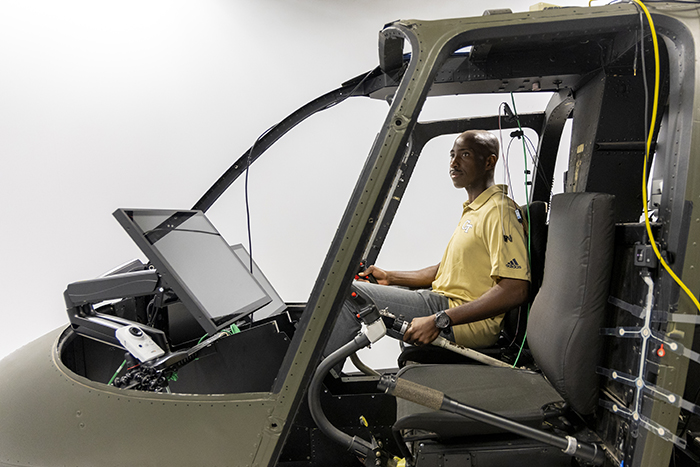
Richard Agbeyibor, flight test engineer, U.S. Air Force.
Flight Test engineer, U.S. Air Force
Third-year Ph.D. student, robotics
Born in Togo, West Africa, Richard Agbeyibor came close to being chosen when he applied in 2020. He was invited to Houston's Johnson Space Center for an in-person interview in March 2021, "and got the VIP tour, got to hang around with astronauts," he said. He was invited to a second interview a few months later and was one of the final 30 candidates before being cut.
“This time, if I make it past the resumé shuffle to the interview round again, I hope to show that I’ve got the right stuff,” said Agbeyibor, whose family came to the U.S. as refugees when he was 12. After graduating from MIT, where he was in the ROTC program, he was commissioned as an Air Force officer. In 2022, Agbeyibor began his Ph.D. studies, joining Karen Feigh’s lab in the Daniel Guggenheim School of Aerospace Engineering.
He’s earned his commercial pilot’s license and is currently pursuing his helicopter license. “I love everything that flies, and flying helicopters has been a dream of mine,” he said, noting too that NASA uses helicopters for training astronauts in moon landings.
“For the past four years, I’ve continued on this track of developing myself technically and personally. I’ll try to demonstrate to NASA that I’m even more prepared now to become a member of the team.”
Kayla Garoust
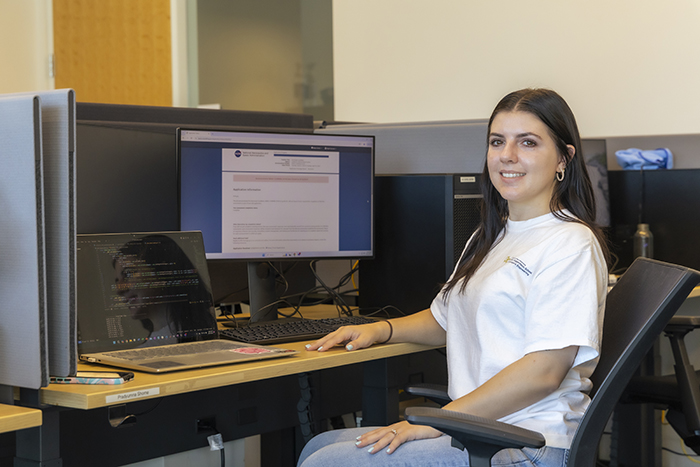
Kayla Garoust, second-year Ph.D. student, aerospace engineering.
Second-year Ph.D. student, aerospace engineering
Growing up in Melbourne, Florida, Kayla Garoust watched launches from Kennedy Space Center a few miles away, daydreaming about riding in one of those rockets. It was the kind of reverie that would have been unimaginable to her grandfather. He’d been a French intelligence operative who was given 24 hours to flee Morocco when the country had gained its independence from France in 1956.
With nowhere else to go, Garoust’s grandfather moved to the U.S., settling on the Florida space coast. “Growing up in that area, I remember those launches, hearing the sonic boom,” she said. “Everything shook. It was so cool, and I thought, ‘I want to do that — I want to be on that rocket.’”
Garoust, 24, began checking off the proverbial boxes early. She threw herself into schoolwork, becoming valedictorian in her high school, where she was also captain of the basketball, cross-country, and track teams. She went skydiving. These days, she lifts weights, does yoga, and keeps tabs on current space news (through SpaceNews).
After graduating from the University of Florida, she joined Koki Ho’s lab in the Guggenheim School, where her Ph.D. focus is on orbital mechanics and optimization.
“It’s a lot of fancy space math, basically,” Garoust explained. “I don’t expect much to come out of the astronaut application, not the first time. But I’m eager to apply again because I think my odds will improve each time. I’m just ready to see what life has in store for me.”
Catherine Schlabach
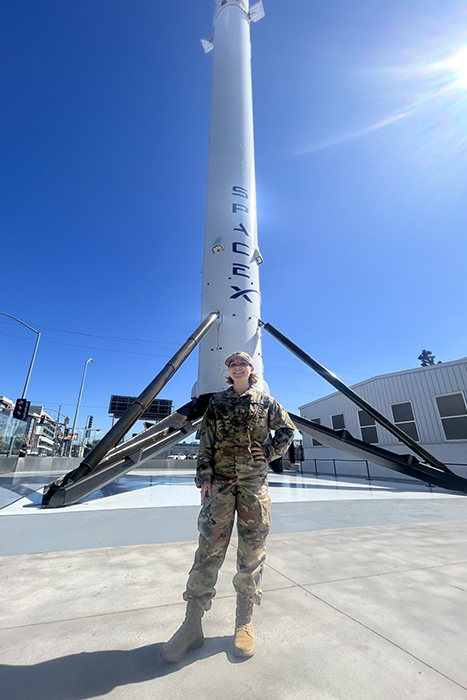
Catherine Schlabach, second lieutenant, astrospace engineer, United States Space Force.
Second lieutenant, astrospace engineer, U.S. Space Force
At the age of 10, Catherine Schlabach watched the space shuttle Atlantis blast off into the Florida sky for the last-ever shuttle mission. She remembers thinking, “Well, they’re not doing this anymore, so there goes my chance to be an astronaut.' I was really kind of sad."
It was July 2011. She bounced back. Encouraged by an elementary school teacher to focus on STEM subjects and inspired by her grandfather, who flew for the Army Air Corps in World War II, Schlabach felt destined for flight from an early age. She earned her pilot’s license while still in high school.
At Georgia Tech, she joined the Yellow Jacket Flying Club, and later, the ROTC program, which changed the trajectory of her career. After earning her master’s in aerospace engineering in May, Schlabach moved to Vandenberg Space Force Base in California, where she works in the SpaceX program — she is one of the engineers responsible for managing technical and operational aspects of a rocket launch.
“I love being part of the team that's getting something into space. A big reason I joined the military is for the teamwork and leadership experience — you don’t send just one person; you send a team,” Schlabach said. She is still focused on becoming an astronaut and plans on applying again and again. “I’m inspired by this work. Whenever I see a rocket launch or hear an astronaut speak, I’m moved to tears. I want to be that inspiration for others, especially young girls who have dreams like mine.”

Writer: Jerry Grillo
Media Contact: Shelley Wunder-Smith | shelley.wunder-smith@research.gatech.edu
Photos: Christopher McKenney, Rob Felt, and Catherine Schlabach
Video: Christopher McKenney

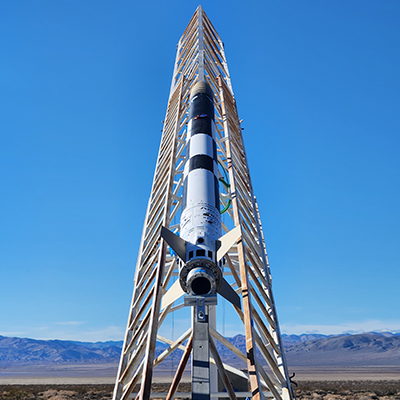 Multidisciplinary Initiative Marks Golden Age for Space Research
Multidisciplinary Initiative Marks Golden Age for Space Research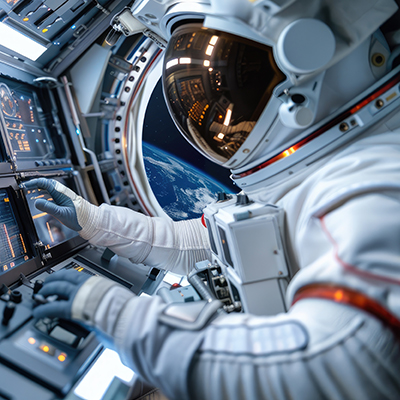 Meet Georgia Tech’s Astronauts
Meet Georgia Tech’s Astronauts NASA Selects GT Researcher to Study New Breathing Tech
NASA Selects GT Researcher to Study New Breathing Tech



